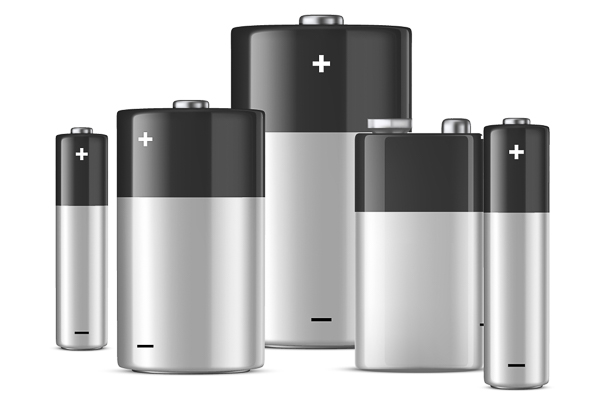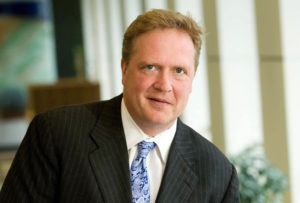Re-energizing P&G’s bottom line with the IBI’s Duracell case study

By Bryan Burroughs, Two-Year MBA ’20
When the Johnson Investment Banking Immersion began I was expecting the class would work as “bankers” on the weekly assigned deal, but this time we were challenged to complete a case study from the client prospective. This week’s task: review a 12-page summary of Procter & Gamble’s disposition of their Duracell business and come prepared to meet with P&G’s CFO Jon Moeller ’86, MBA ‘88.
The situation
In 2013 Procter & Gamble, a leading consumer products company, began assessing a potential divesture of Duracell, the world’s top battery brand and P&G portfolio company. They began a portfolio transformation in 2012 as P&G was constantly looking to improve shareholder return through organic growth and strategic changes to the portfolio, with the goal to only manage “daily use, market leading” brands.
While assessing their vast variety of brands, P&G noted that the Duracell business did not have many synergies with other brands in the company’s portfolio. Additionally, P&G saw a heightened risk to the battery industry going forward given increased competition and the lack of innovation required to compete in the industry. Within the industry there were two main competitors (Duracell and Energizer) along with private label store-owned brands. This caused concern as many storefronts were unwilling to stock both Duracell and Energizer, along with the store’s private label brand.
After identifying the potential divestiture, the company needed to value Duracell and find a buyer. To find a valuation P&G likes to calculate total shareholder return, a measure similar to internal rate of return that forecasts the return a portfolio company would have it was a stand-alone business. This helps P&G calculate a “keep price” or how much the company is worth to P&G if they kept the business in-house. The team also needed to calculate an external valuation that could be used to justify a sale price. A typical method to find an external valuation would be to use comparable companies, but as common in many transactions there is no perfect comparable company.
Finding a valuation
Since the case told us to act as if we worked for P&G, my team decided the best route would be to calculate all the P&G specific metrics used to evaluate a portfolio company. We utilized a set of assumptions to calculate sales growth, cost estimates, and other expenditures to forecast 10 years of annual free cash flow generated by the Duracell business. After finding cash flow we used Energizer’s EV/EBITDA to generate an entry and exit valuation of Duracell, and treated the middle eight years of cash flow as a dividend paid to P&G. These inputs calculated the total shareholder return of 7.17 percent, a figure much lower than P&G expectations for a developed business to achieve. This indicated that P&G was justified to dispose of Duracell, given they could find a buyer willing to pay the right price.
The biggest issue with selling Duracell was the major tax implications. No corporate executive likes writing a check to Uncle Sam, but there was an increased incentive in this deal as Duracell had a very low tax basis (meaning P&G would have to pay almost $1 billion in taxes upon sale). P&G would need to find a buyer willing to pay the entire tax burden plus the internal keep price, in order to justify the deal. With all considerations laid out, my team estimated that P&G would need to sell Duracell for ~$4 billion.
What happened to Duracell?

When the IBI entered the classroom for our standard Monday meeting, Jon Moeller was ready to walk us through how he approached the divestiture. He started with the main considerations: how to deal with the taxes, who to sell the business to, what will the EPS impact be, and how will P&G deal with the stranded overhead expense that Duracell would no longer absorb. After speaking to each point, he discussed potential ways of sale. The company had found a potential buyer located in China and engaged in advanced negotiations, but both sides were unable to come to an agreement on pricing. P&G also solicited bids from private equity investors, but once again there was too much disagreement on pricing.
Finally, Jon made a phone call to Warren Buffett hoping that Berkshire Hathaway would make a bid. Berkshire was one of P&G’s largest shareholders, owning ~$4 billion in shares. After rounds and rounds of negotiations P&G eventually sold Duracell in a complex transaction to Berkshire Hathaway in 2016, but only after exploring a variety of options. The deal was known as a “cash-rich split-off” which required P&G to infuse ~$1 billion into Duracell upon sale to Berkshire, and Berkshire would trade its current P&G shares for the ownership rights to Duracell. Both sides were extremely happy with the terms and the deal was even sweeter because it avoided tax expenses for both parties.
Hearing from a client
Having the opportunity to hear from a well-respected corporate executive on how he approaches M&A gives us future bankers a different yet incredibly important insight as we are headed into our summer internships. During this case we were lucky enough to learn from Jon, who has more M&A experience than almost every other Fortune 500 executive. He left us with some parting pieces of advice:
- Always have another option – had Berkshire not purchased Duracell, Jon needed to be prepared to continue running the company or to find another buyer
- When dealing with a buyer, be smart with how you play your cards – you can never let anybody smell desperation
- Your reputation means everything – deals are always happening and if you aren’t forthcoming with information on one, your reputation will be ruined for all future deals
- Things take time – P&G started exploring the Duracell divestiture in 2013 and the transaction did not complete until 2016, had the deal been rushed P&G would have probably lost shareholder value
The session ended with Jon talking a about P&G’s strategy going forward and announcing the news that starting in July 2019 he will serve as both the CFO and COO of P&G. Finally, he wished us well as we continued the rest of the IBI into our summer internships.
About Bryan Burroughs, Two-Year MBA ’20

Bryan is a first-year MBA candidate at Johnson and will be working at Goldman Sachs in the Industrials Investment Banking group this summer. Before business school he worked at Textron Inc, an industrial conglomerate focused in aerospace and defense. At Textron, Bryan held numerous positions within the finance organization and was a graduate of Textron’s Leadership Development Program. Bryan holds a BS in accounting and finance from the University of Maryland.
